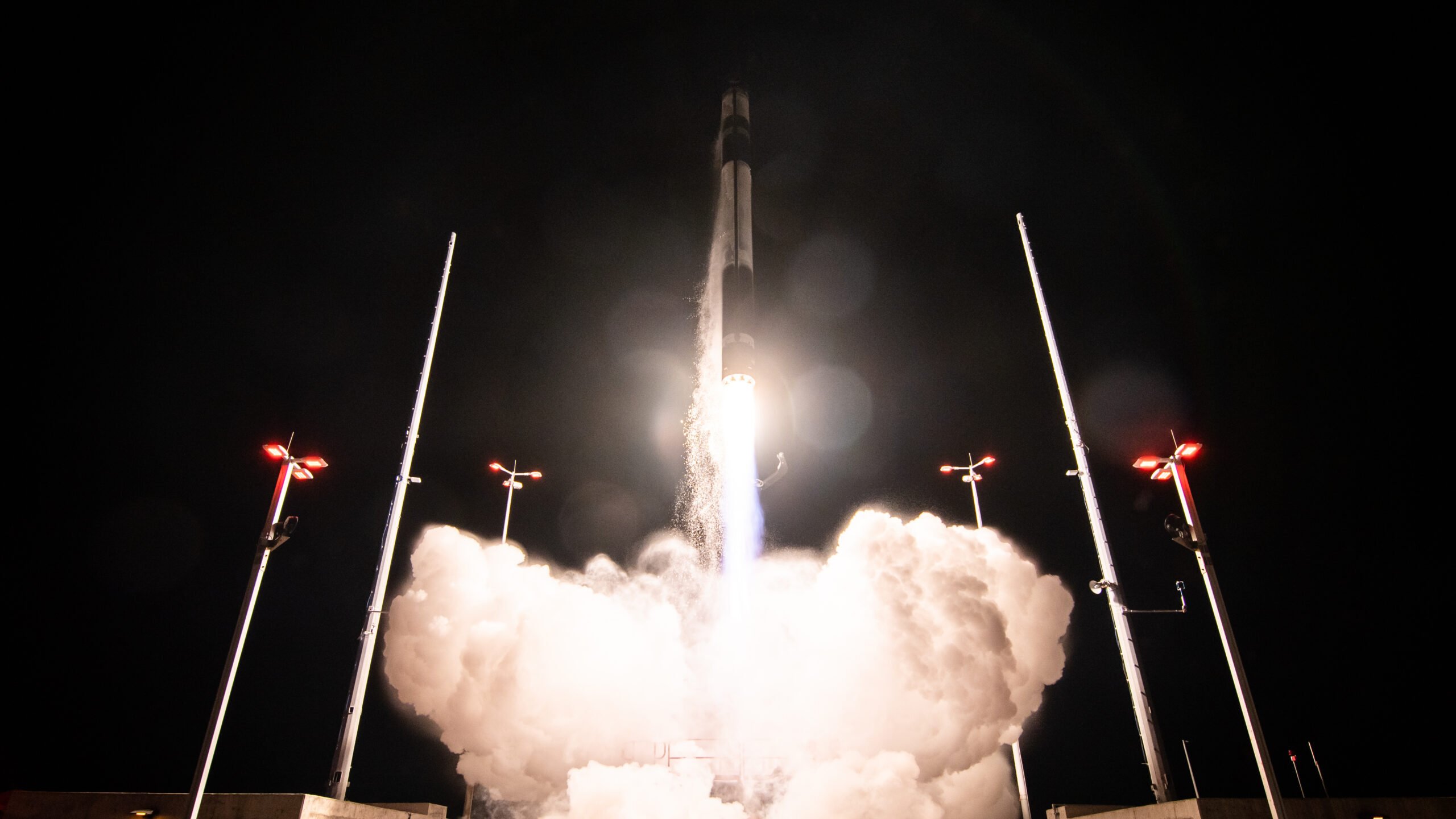
Electron lifts off from Launch Complex 2 at NASA’s Wallops Flight Facility at the Mid-Atlantic Regional Spaceport in Virginia Jan. 24. The mission was Rocket Lab’s first launch from US soil. (Image Credit – Brady Kenniston)
SPACE SYMPOSIUM — Rocket Lab today announced a new testbed launch vehicle the company says will accelerate development of hypersonic technology.
Called HASTE for Hypersonic Accelerator Suborbital Test Electron, the rocket is derived from the company’s bellwether Electron vehicle, which has launched payloads for customers like the Space Force and National Reconnaissance Office since 2018. According to a Rocket Lab press release, HASTE will be ready to lift off in the first half of this year from the company’s launch pad in Wallops, Va., for a “confidential customer.”
“Rocket Lab has a strong track record of delivering tailored and reliable space capabilities for the civil space and national security communities across launch and space systems and HASTE is an extension of this,” Rocket Lab Senior Director of Global Launch Services Brian Rogers said in the release.
“Hypersonic and suborbital test capabilities are key priorities for the nation, yet the DoD’s ability to test these systems has been limited. With HASTE, we’ve taken a proven vehicle in Electron and tailored it specifically to deliver highly capable, frequent, and cost-effective hypersonic and suborbital test opportunities from our existing launch site in Virginia,” he added.
Suborbital flights don’t reach high enough speeds to achieve escape velocity, meaning they can technically enter space but aren’t going fast enough to stay on orbit before falling back to earth.
The predecessor Electron launch vehicle carries small satellites to space, with a track record of 159 deployments to date. Rocket Lab says HASTE’s design is “evolved” from Electron’s with tweaks to its kick stage of flight — where satellites are released and placed on orbit — to facilitate deployment of hypersonic payloads. The changes will also enable the rocket to blast off with greater payloads measuring up to 700 kilograms (1,500 pounds).
RELATED: DIU asks industry for help getting hypersonic test jet closer to lift off
Along with other contract opportunities, the press release says that HASTE was selected by the Defense Innovation Unit (DIU) for the hypersonic and high-cadence testing capabilities (HyCAT) program. For HyCAT, Rocket Lab will integrate scramjet-powered payloads including one under development by the Australian company Hypersonix Launch Systems that nabbed an award from DIU in March.
When announcing the successful bids for HyCAT, DIU noted that a limited number of test ranges was slowing hypersonic maturation, and that initiating tests at high altitudes would reduce costs by skipping the most fuel-intensive stage of launch.






















